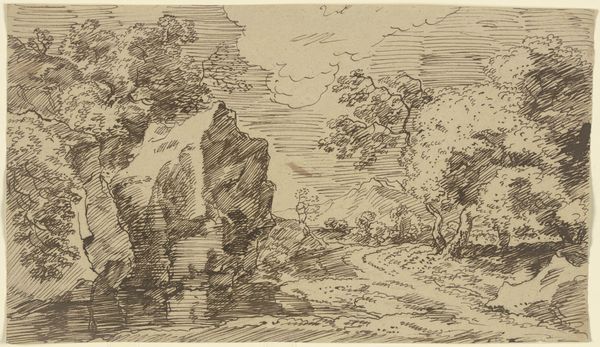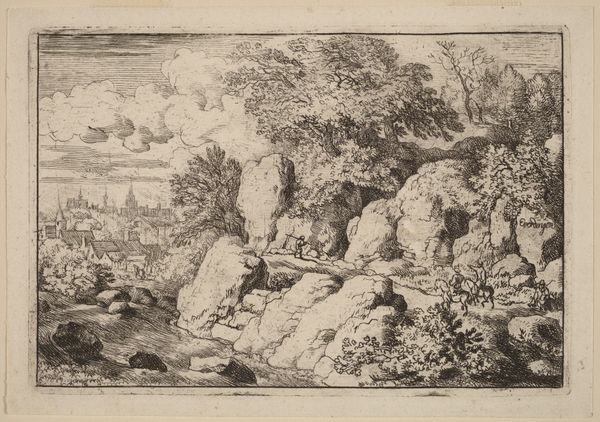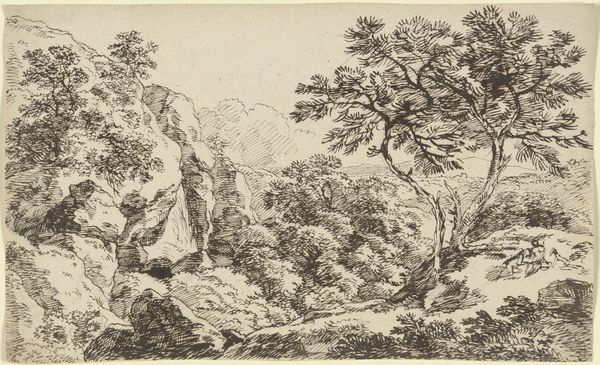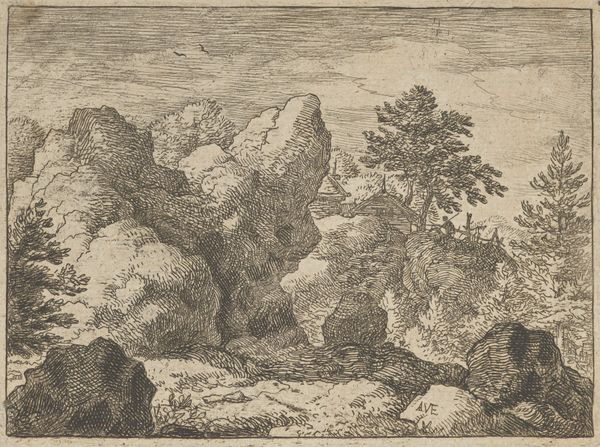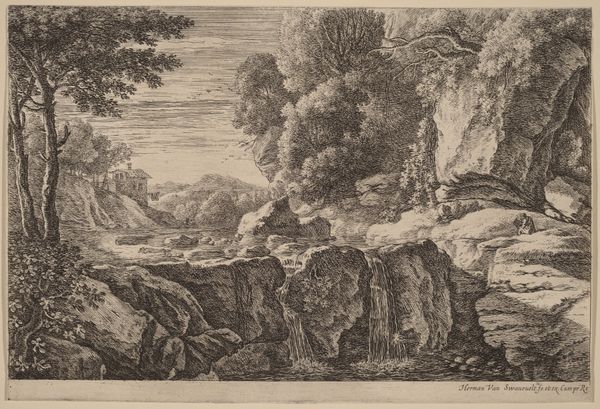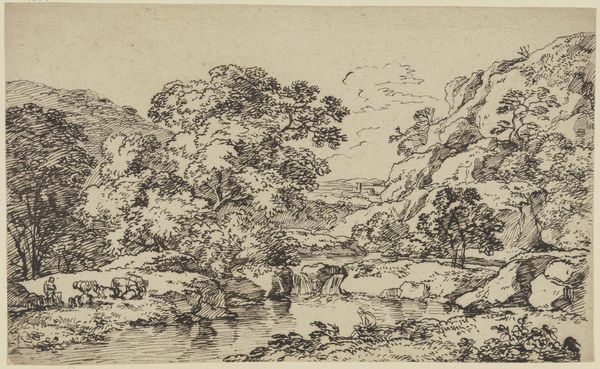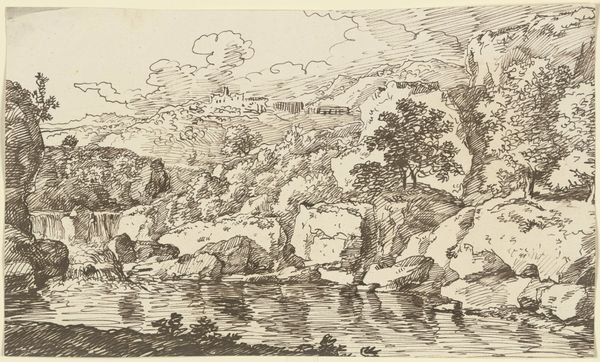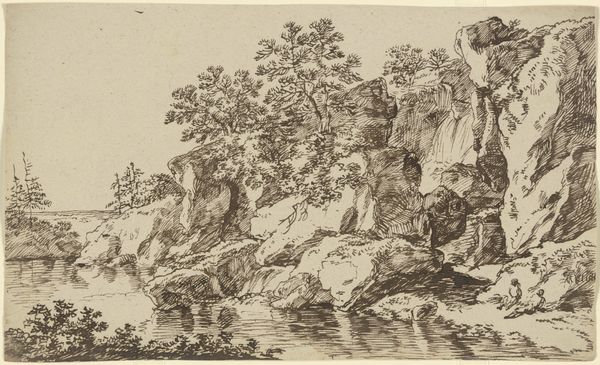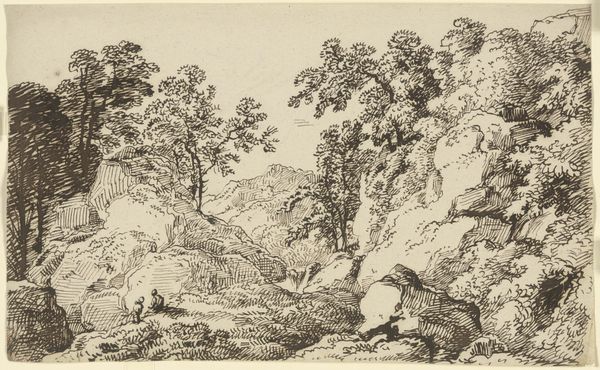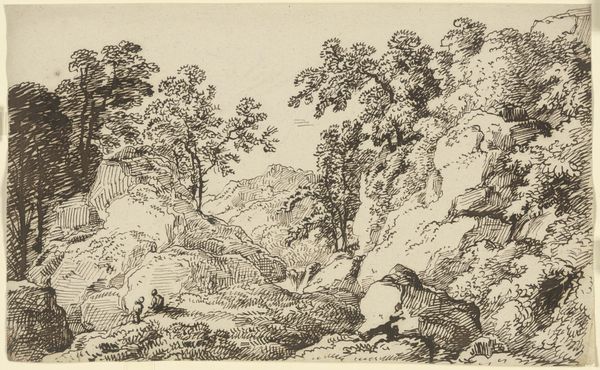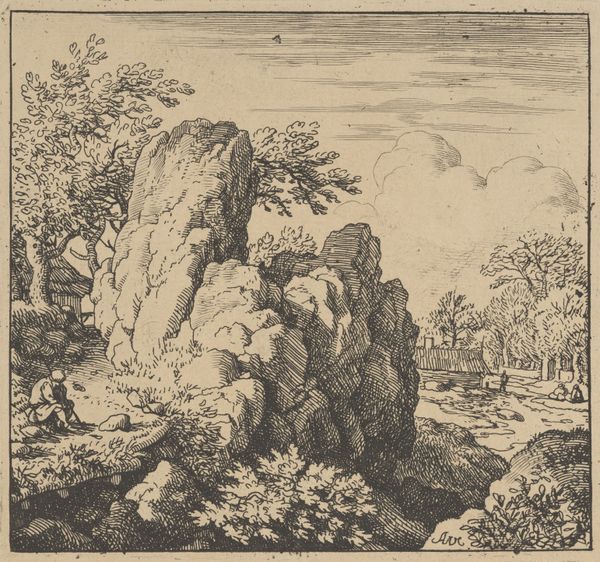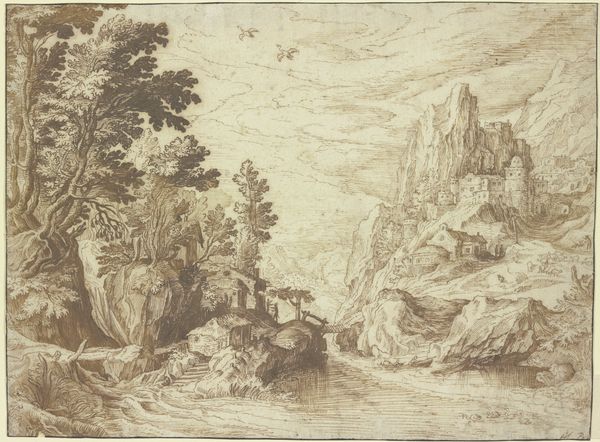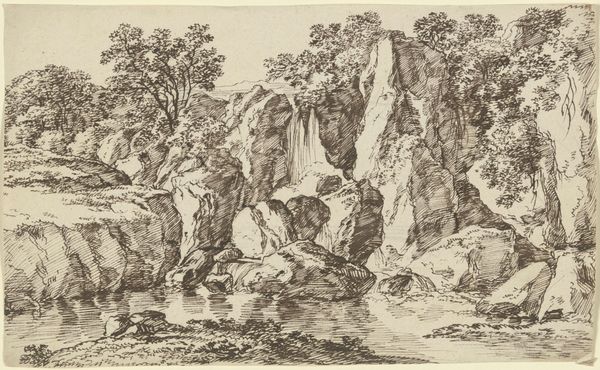
drawing, paper, ink
#
drawing
#
landscape
#
figuration
#
paper
#
ink
#
romanticism
#
line
#
realism
Copyright: Public Domain
Curator: Let's turn our attention to this drawing, “Rocky Mountain Landscape,” rendered in ink on paper. The piece, attributed to Franz Kobell, invites us to consider a seemingly untouched natural scene. Editor: My immediate reaction is one of quiet grandeur. The landscape feels expansive, but there's an intimacy achieved through the precision of the ink work, doesn’t it? Curator: Precisely. Note how Kobell has painstakingly built the forms – the craggy rocks, the foliage – with layers of lines. We're seeing a dedication to the craft here. Consider the source of this ink, probably iron gall, created via a complex, alchemical-like process—its ingredients dictated the image we have before us. This is labour manifesting beauty. Editor: The Romantic influence is strong here, the tiny figures almost swallowed by the immensity of nature. Do they suggest vulnerability, perhaps? Curator: They certainly provide a focal point for scale. Their inclusion also makes the natural world legible as something lived in, perhaps an early Romantic conceit around sublime experience accessible through measured encounter. Editor: Absolutely. And while the lines are incredibly detailed, the overall effect is not photographic. The way Kobell suggests textures, the variations in shading – it's less about pure realism and more about conveying a mood. Think of the human mind's connection to specific landscape typologies and what these landscapes signify for certain people. Curator: Consider the availability of paper at the time. This was a considered act; resources mattered. Someone processed and treated that sheet of paper – each step adds to the artwork’s embodied energy and is often elided in favor of artistic genius or inspiration. It begs questions around whose mountains are represented and what impact such ownership had on this era. Editor: Food for thought! The river acts as both a mirror, reflecting the sky and its impermanence, and a path inviting us deeper into the unknown. Its fluidity emphasizes this sense of endless transformation, a common symbol found in landscape artwork throughout art history. Curator: Ultimately, seeing Kobell's drawing through the lens of labor and materiality offers us fresh perspectives, highlighting that so much is involved when an artwork is conceived beyond any concept of genius. Editor: And from the iconic standpoint, the power of the landscape lies in its representation of the infinite and sublime, beckoning us into deeper explorations of nature and ourselves. It’s a work I will return to, often, I suspect.
Comments
No comments
Be the first to comment and join the conversation on the ultimate creative platform.
